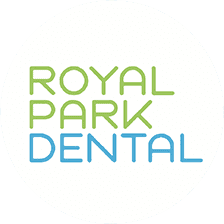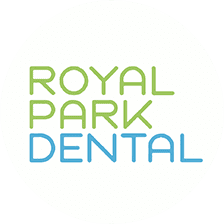Understanding Dry Socket: Causes, Symptoms, and Prevention
What is a Dry Socket?
Dry socket prevention is essential after a tooth extraction. This condition, known medically as alveolar osteitis, occurs when the blood clot at the extraction site either dissolves or dislodges before the wound has healed. As a result, the underlying bone and nerves may become exposed, leading to significant pain and discomfort.
Experiencing a dry socket can slow healing and raise the infection risk. It often leads to persistent pain, bad breath, and an unpleasant taste. Proper aftercare after a tooth extraction is crucial to reducing the risk of a dry socket and ensuring good oral health.
To avoid severe pain and infection, it’s crucial to follow your dentist’s pre and post-operative instructions. If you notice any symptoms of dry socket, seek immediate dental care.
Causes and Risk Factors of Dry Socket
Dry socket prevention is crucial, as dry socket, or alveolar osteitis, is a painful condition that can occur after a tooth extraction, particularly with wisdom teeth removal. The primary cause is the dislodgment or absence of the blood clot that forms in the socket.
Several factors can increase the risk of developing a dry socket, including smoking, poor oral hygiene, and a previous history of this condition. Understanding these causes can help patients take proactive steps for a smoother recovery.
Several factors can increase your risk of developing a dry socket:
- Oral Health Issues: Existing dental problems, such as gum disease or infections, can interfere with clot formation, making it difficult for your gums to heal properly.
- Complex Extractions: More complicated tooth extractions, like those involving impacted wisdom teeth, can lead to a higher chance of developing a dry socket due to the increased trauma to the surrounding tissue.
- Hormonal Factors: Taking birth control pills can influence blood clotting, which increases the risk of having a dry socket, particularly during certain phases of your menstrual cycle.
- Tobacco Use: Smoking or using tobacco can disrupt the healing process and dislodge the clot, as the chemicals in tobacco reduce blood flow to the gums and delay recovery.
- Inadequate Aftercare: Failing to follow post-extraction care instructions, such as not keeping the area clean or eating hard foods too soon, can increase the risk of a dry socket.
- Previous Experience: If you’ve had a dry socket in the past, you’re more likely to develop it again, especially if the underlying causes haven’t been addressed.
- Forceful Actions: Spitting or rinsing forcefully after extraction can dislodge the blood clot, leading to a dry socket and exposing the underlying bone to potential infection.
Recognising the Symptoms of Dry Socket
Recognising the symptoms of dry sockets is essential for effective dry socket prevention after tooth extraction. This condition often starts with intense pain a few days post-procedure, which can radiate to the jaw, ear, or temple. Patients may also experience a foul taste in their mouth, bad breath, and visible bone in the socket.
Differentiating a dry socket from normal healing is crucial. While some discomfort is expected, dry socket pain is sharper and more persistent, often not relieved by over-the-counter pain relievers.
Other signs to watch for include an unpleasant taste and the absence of a blood clot in the extraction site. If you notice these symptoms, contact your dentist promptly. Early intervention can help manage the condition effectively and support a quicker recovery.
Symptoms to watch for include:
- Severe Pain: Intense pain usually starts 1-3 days after the tooth extraction and can feel throbbing or sharp.
- Empty Socket: The extraction site may appear empty due to the absence of a blood clot, indicating a problem with healing.
- Bad Breath and Taste: An unpleasant smell and taste in the mouth can result from tissue breakdown in the empty socket.
- Slight Fever: A mild fever may occur, which can signal an underlying issue related to the extraction.
Preventing Dry Socket: Tips and Best Practices

To minimise the risk of developing dry socket, consider the following recommendations:
- Follow Instructions: Adhere to your dentist’s specific post-extraction guidelines to promote healing and reduce the risk of complications.
- Control Bleeding: Bite down on gauze for 30-45 minutes to help form a clot. Replace the gauze as needed if bleeding persists to ensure the clot stays in place.
- Reduce Swelling: Apply a cold compress to your cheek in 10-15 minute intervals to minimise swelling and discomfort during the first 24 hours after extraction.
- Eat Soft Foods: Stick to soft foods like yoghurt, mashed potatoes, or smoothies, and avoid hot or crunchy items that could irritate the extraction site.
- Stay Hydrated: Drink plenty of water to stay hydrated, but avoid using straws, as the suction can dislodge the clot and lead to a dry socket.
- Oral Hygiene: Brush gently, avoiding the extraction site, to keep your mouth clean. After 24 hours, rinse with salt water to reduce the risk of infection.
- Monitor Healing: Watch for complications like severe pain, prolonged bleeding, or signs of infection. Contact your dentist immediately if any issues arise.
- Pain Management: Follow your dentist’s instructions for pain relief, using prescribed medications or recommended over-the-counter options to manage discomfort.
- Attend Follow-Ups: Keep your follow-up appointments to ensure proper healing and address any concerns with your dentist.
Your Comfort and Recovery Are Our Top Priorities
At Royal Park Dental, dry socket prevention is a key focus during your recovery after tooth extraction. By following your dentist’s instructions, avoiding smoking, and refraining from vigorous rinsing, you can protect the blood clot and ensure proper healing.
Our dedicated team is here to support you throughout your recovery process. For more information on dry socket prevention or to schedule a follow-up appointment, visit Royal Park Dental. Your health and comfort are our top priorities!



